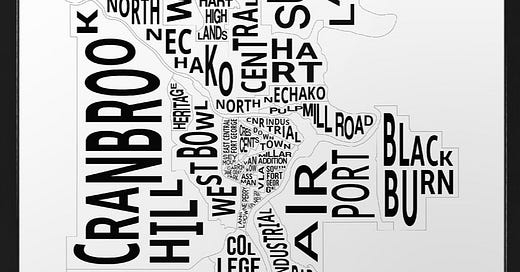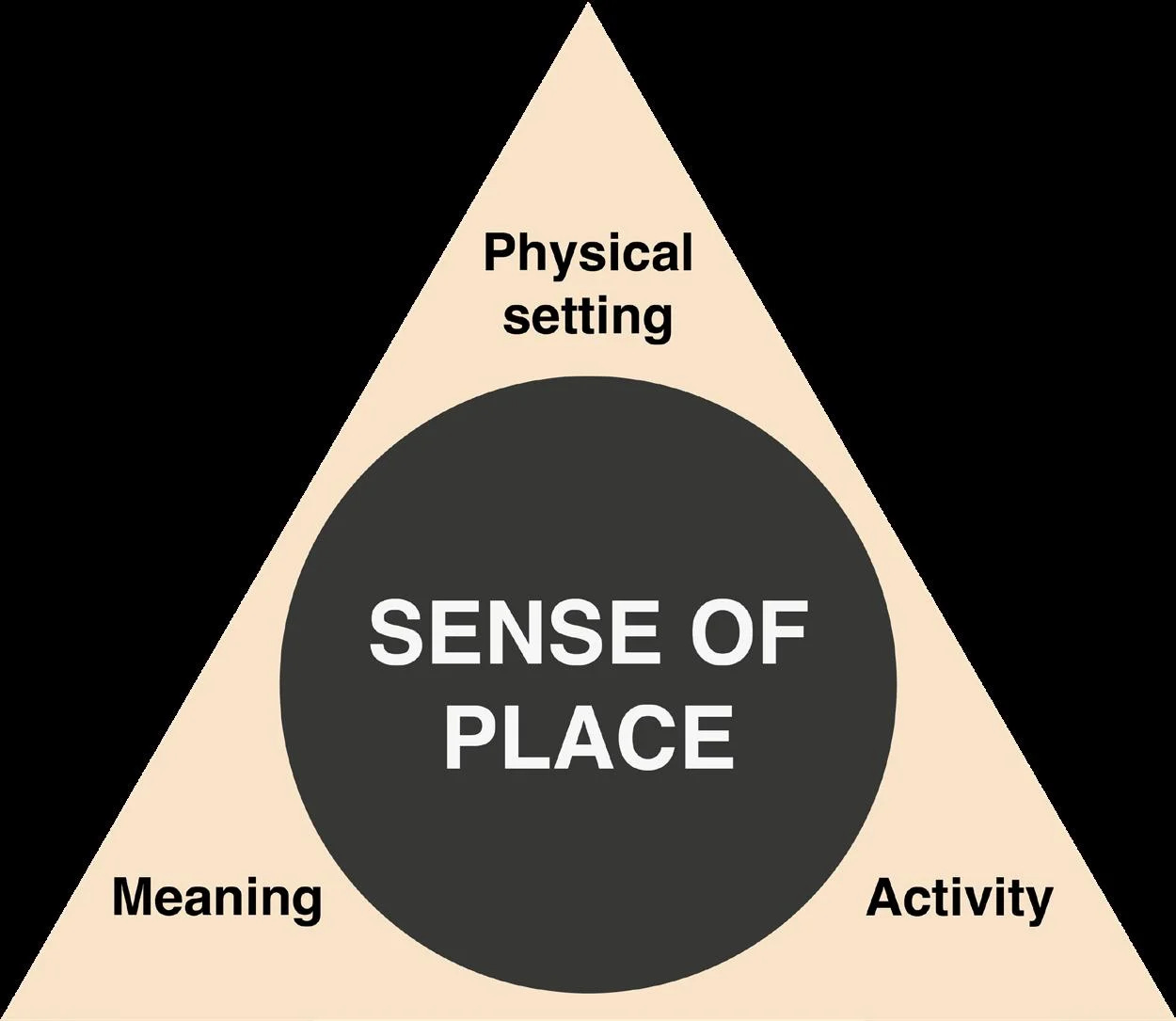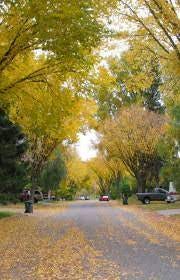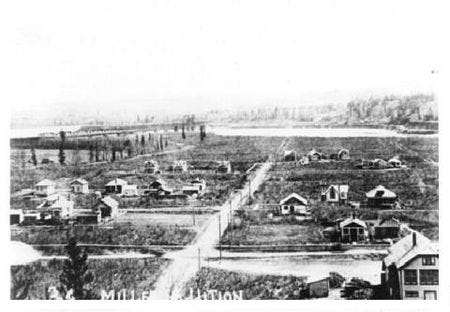Neighbourhoods: Part 1
Why Neighbourhoods?
This is the first of what may end up being a short, or perhaps re-occurring, series of posts on neighbourhoods — as defined by residents, real estate agents, sociologists, heritage managers and the City. Let me say up front that for me neighbourhoods are the basic and essential unit of Heritage in the city. Not historic buildings or museums or heritage-tourism venues — but where we live.
Prince George is comprised of numerous neighbourhoods; some are “historic” and others are enclaves that have recently been planned by the City and developers. They are all part of the overall narrative of the city and all have meaning for people who live in and visit them.
What is a Neighbourhood?
The area of a town that surrounds someone's home or the people who live in this area (Cambridge Dictionary)
A section lived in by neighbors and usually having distinguishing characteristics (Merriam Webster)
An urban residential area, generally small enough to be covered easily on foot. It is sometimes assumed that neighbourhoods are also communities defined by social interaction or defined by geographical boundaries such as major roads, parks, or rivers, but this need not be the case (Oxford Reference)
Damon D Chan Map Designs
Ideas about Neighbourhoods
There a couple of ideas or “concepts” that I want to highlight as useful for our investigations into neighbourhoods; they may not be new to you but maybe you haven’t thought of them as ways of looking at where you live…
Collective Memory
In my recent Heritage Snapshot about the Hudson’s Bay Company store, I referred to the many memories local people share of the place and the role of the HBC in BC and Canadian history. I said that it’s a perfect example of the relationship between what we call “heritage” and what we think of as “collective memory” — individual memories that are articulated and thus shared and enter the realm of social or collective rememberings.
A place will have a patchwork of collective memories, overlapping and held by different groups of people. If you have deep roots in a place you may not even be aware any more of these memory-bases but, as a newcomer, I can assure you that they quickly become apparent to those observing with fresh eyes and ears.
Collective memory (Photo: theneweconomy.com)
Keep this idea of collective memory in mind as we look at the function of neighbourhoods as heritage spaces with Social Capital….
Social Capital
Robert Putnam, in his classic study Bowling Alone: the collapse and revival of American Cities (2000), describes Social Capital as connections among individuals, “a sense of belonging and the concrete experience of social network”. He views social capital as a valuable resource, similar to economic or human capital, that can be used to achieve collective goals. It refers to an individual’s involvement in various informal sets of connections and formal civic organizations, from a small chat with neighbors to sharing some recreational activities, from joining an environmental organization to taking part in political activities.
It’s what grows in our neighbourhoods — “Social Capital is not just the sum of institutions which underpin a society- it is the glue that holds them together” (World Bank 1999)
(Photo: Adobe Stock)
Sense of Place
"A Sense of Place is a unique collection of qualities and characteristics – visual, cultural, social, and environmental – that provide meaning to a location. Sense of Place is what makes one city or town different from another, but Sense of Place is also what makes our physical surroundings worth caring about." (McMahon 2012)
In other words, by living in a neighbourhood, we all form and share collective memory and meaning that work with the landscape, built features and history of the locale to create its layered sense of place.
https://issuu.com/rgmdesign/docs/masterwork_rafa_grosso_macpherson/s/30086215
The ways that we safeguard and grow that Sense of Place are called Placekeeping….
Placekeeping
Placekeeping is the active care and maintenance of a place and its natural, cultural, and social fabric. It is not just about preserving buildings and landscapes, but also about keeping the social memories associated with a place alive.
“We all need points of reference and orientation. A community’s unique identity provides that orientation, while also adding social and economic value to a place. The more one community comes to look and feel just like every other place, the less reason there is to stay, to invest or to visit.” (McMahon 1012)
These are all concepts that we can use in further discussions about what constitutes the heritage of Prince George and the North, what is the value of our neighbourhoods as heritage and how we can use them as the basic units of “heritage activism”.
Heritage and Neighbourhoods
In the world of heritage management, neighbourhoods tend to be valued in terms of how much historic fabric remains, how many old buildings still stand, and whether those buildings form a meaningful cluster in their original setting which reflects what the authorities feel are the neighbourhood’s history and heritage values.
Some neighbourhoods in Prince George meet these criteria to varying degrees.
The Crescents and Downtown were both designed as part of the original Brett, Hall & Co. layout for the townsite in 1913. It was inspired by the City Beautiful Movement with its concentric avenues, central Duchess Park and view lines towards downtown to the east. The neighbourhood has retained its original layout and has many houses from the first part of the 20th century, four of which are on the Heritage Register.
South Fort George, established in 1910, was one of the city’s earliest settlements; it retains much of its layout and its historical associations with the river and paddlewheelers of the past, Hudson’s Bay and the Lheidli T’enneh lands, but not much in the way of “heritage buildings”
Millar Addition (1914) and the Veterans Land Act (1945) are both areas with strong associations with specific periods and events in the life of Prince George. Do they include “heritage buildings” representative of their periods? I haven’t had the opportunity to investigate, but I suspect they do….
Millar Addition in 1921 (Photo: Wikipedia)
And then there are the dozens of other neighbourhoods that make up the city of Prince George, from Blackthorn to Chief Lake, urban and rural, older and newer —
If we persist in thinking of “heritage neighbourhoods” as requiring old buildings that we can register, preferably in concentrations that we can draw a line around and call Heritage Conservation Areas, we will go on missing the point.
And the Point is….
…. that “heritage neighbourhoods” are not neighbourhoods with lots of historical buildings, they are rather places where we are held by a fond Sense of Place and bound by the glue of Social Capital based on our shared Collective Memory. We create “heritage neighbourhoods” by living in them and by Placekeeping in practical everyday ways and by making continuing emotional investments.
Why I think it matters
I think it matters how we think about and define our neighbourhoods. In part because they should be the platform from which we launch a project to identify and map NORTHERN HERITAGE.
You may remember that in my first post in early February I asked you to start making a list of NORTHERN HERITAGE and to stick it on your fridge. I asked “what are the places that give you solace and comfort, buildings that make you smile, views that always draw your eyes, activities that charge your batteries, sights that remind you why you moved North and why you stayed…”
So let your list grow!









